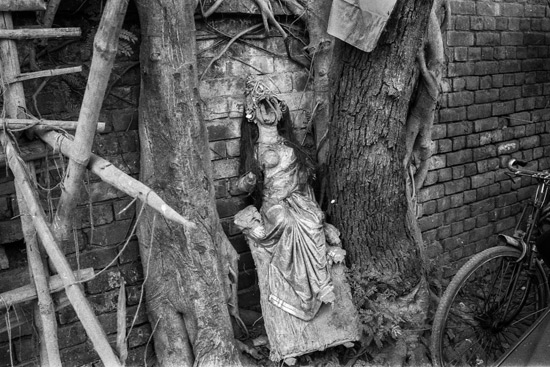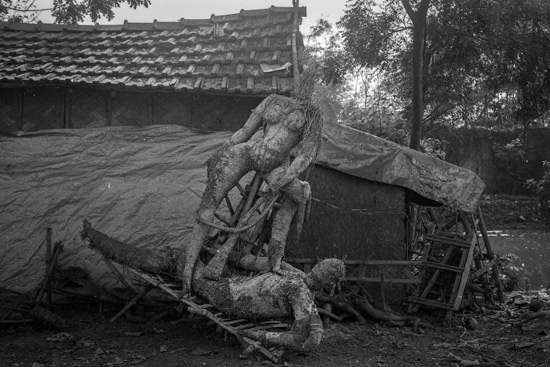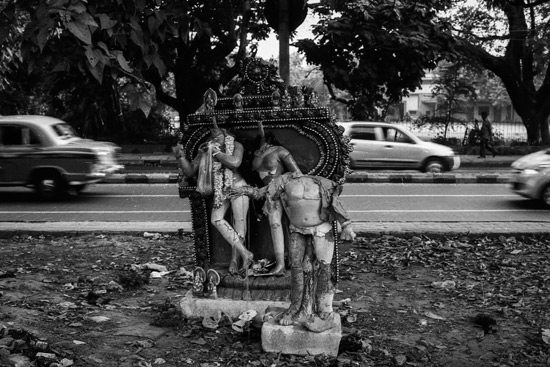
© Shantanu Bhattacharya
I'll let Shan explain these as he does it so well:
"The relationship between Hinduism and idolatry is a complex one. In Yajurveda it has been said that God Supreme or Supreme Spirit has no 'Pratima' or material shape. He cannot be seen directly by anyone. His name is so great that only the Name is enough to invoke him. He pervades all beings and all directions. Thus according to the Vedas God neither has any image nor he resides in any particular idol or statue.
Yet we find that Hindu temples are filled with images or idols of gods and goddesses. And a fair percentage are worshiped at specific days of the year through idols made up of straw and clay. On that particular day, they are dressed in costly fabric, treated with paint, subjected to readings of holy mantras and receive offerings from devotees. Curiously, however, once the day gets over, these idols lose their divinity and are disposed of."

"The most common explanation goes like this - as the mind cannot concentrate itself on a formless being one has to assume God in some visible object or image. Devotees believe that God made Man in his own image. So it seems only natural that man has also constructed his God by his own image. Perhaps it also becomes easy to stop treating an idol divine after the ritual if that idol is of a humanoid shape."

"Meanwhile, the cityscape gets filled with these humanoid figures as the devotees no longer know what to believe in them."





